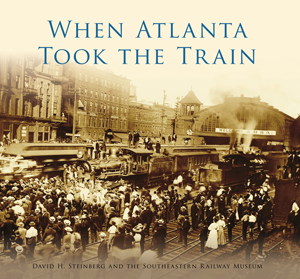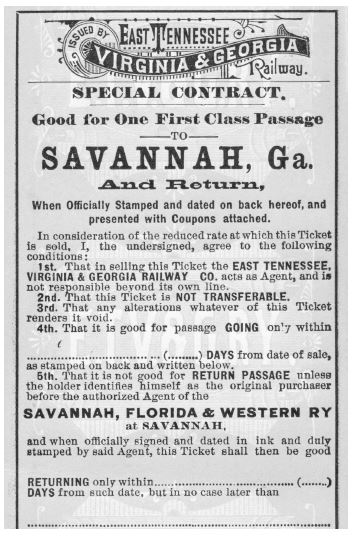There’s no doubt that college basketball is exciting to watch. Whether it’s the pride that washes over you when your alma mater scores a point or the adrenaline rush during the final seconds of a particularly intense game, it’s all part of what keeps you coming back year after year.
The spirit of competition is also a huge deal when it comes to college basketball. Naturally, when every team is giving it 100% as they strive for greatness, friendly rivalries can’t help but pop up. Here we’ll take a closer look at one of the most fascinating aspects of college basketball – the rivalries themselves! The following are just a handful of the ones we’ve deemed the most enduring, fascinating, or legendary.
New Mexico vs. New Mexico State
This rivalry is best known to those who follow college basketball teams hailing from west of the Rockies. However, it’s every bit as heated as any rivalry that’s better known on a nationwide level. Each year, the New Mexico Lobos and the New Mexico State Aggies face off in what’s known as the Rio Grande Rivalry, a rivalry that dates all the way back to 1894. Anytime these two schools go head to head in any varsity sport, the winning team is awarded a certain number of points. Naturally, the school with the most points to its credit at the end of the year is the winner.
What’s noteworthy about this particular basketball rivalry is that the Lobos and the Aggies are in different conferences – Western Athletic Conference for the Aggies and Mountain West Conference for the Lobos. However, they still play two non-conference games against one another each year. They could choose to play just one game and use the other to go up against another opponent to help strengthen their records, but they don’t. They’re more interested in securing a victory over their rivalry.
Syracuse vs. Georgetown
The Big East isn’t just any college basketball conference. It’s one of the most competitive conferences in the entire sport. Syracuse and Georgetown are both from the Big East, so you can just about imagine how heated a rivalry between the two of them can get.
The rivalry began when the Georgetown Hoyas scored an amazing victory after a poorly played game 40 years ago at Syracuse’s own Manley Field House. Such a win would have been upsetting enough to Syracuse fans. However, a full-scale rivalry was born when Georgetown coach John Thompson II grabbed the mike and said: “The Manley Field House is officially closed!”
That quote is so famous that if you type Manley Field House into Google, the search engine will attempt to finish your search with “is officially closed.” If that’s not historically epic, we don’t know what is!
Georgetown vs. Villanova
The Syracuse Orange isn’t the only college basketball team that can claim a legendary rivalry with the Georgetown Hoyas. The Villanova Wildcats can certainly say the same, for good reason. These two schools were among the original members of the “Catholic Seven” in the Big East. They’ve also been engaged in a rivalry since 1979.
Most fans trace the crescendo of the rivalry back to the 1985 National Championship Game. That’s when the Wildcats became the most celebrated underdog champions in the entire history of the NCAA Tournament by miraculously beating the Hoyas when no one thought they had a chance. The rivalry between these two schools has continued with gusto to this day.
Indiana vs. Purdue
Indiana State and Purdue University are only about 100 miles apart from one another. They are also two of Indiana’s most noteworthy and celebrated flagship universities. Their basketball teams enjoy a healthy rivalry that’s been alive and well since the dawning of the 20th century.
India-vs-Purdue-basketball-infographic.png
Indiana and Purdue first went head to head well over a hundred years ago in 1901. Their rivalry is also widely considered to be one of the most intense in the entire history of college basketball. Newsweek listed it among the top twelve most intense while Huffington Post ranked it as the fifth most noteworthy of all time. One time, Indiana Hoosiers coach Bob Knight even threw a chair across the court. That’s how heated the competition between the two teams is.
The rivalry is fueled by the students and their intense love for basketball. Both universities have been members of the famous Big Ten Conference for well over a century, which intensifies the drama surrounding these two teams.
Kentucky vs. Louisville
The rivalry between the University of Kentucky Wildcats and the University of Louisville Cardinals isn’t as long-standing a rivalry as some other ones. However, it is largely considered to be one of the most intense and passionate by fans.
It starts with the fact that college basketball is a huge deal in Kentucky, especially because there are no professional state-affiliated teams. Plus, Kentucky and Louisville are two of the biggest basketball programs in that state. The teams are headed by two of the sport’s most legendary coaches, John Calipari and Rick Pitino. Both men are fiercely competitive against each other.
Every year, these two teams face off in the Battle for the Bluegrass, to the excitement and delight of college basketball fans everywhere. In fact, after Louisville’s amazing 80-68 win in the “Dream Game” of the 1983 NCAA Tournament, the governor of Kentucky passed a bill that made it mandatory for the two teams to play each other every year.
Kansas vs. Kansas State
The rivalry between Kansas and Kansas State is known as the Sunflower Showdown: a series of athletic face-offs that also includes college football. It’s also among the longer-standing rivalries in college basketball, dating all the way back to 1907. The men’s basketball series is the most-played series in the history of either college as well.
Although this rivalry always provides many exciting moments, most fans agree that it hit its peak in the 1950s. That’s when Wilt Chamberlain’s 1957-58 KU team came in second to Kansas State. The rivalry is fueled by the fact that these two schools owned the Big XII from the 1940s all the way through the 1970s.
The Kansas Jayhawks proved that they were the more superior of the two teams during the 1990s. The intense rivalry cooled down a bit after that. However, things began to heat up again in 2006, when Kansas State brought in Coach Bob Huggins to replace Jim Woodridge. Huggins was very interested in reinvigorating the rivalry, much to the delight of college basketball fans everywhere.
Duke vs. North Carolina
If you’re only familiar with one legendary college basketball rivalry, it’s likely to be the one between the Duke Blue Devils and the North Carolina Tar Heels. That’s because it is one of the most heated, talked-about rivalries in the history of college basketball. It’s also considered to be one of the most intense duels in any sport!
So, what makes this particular rivalry so intense? North Carolina and Duke both offer historic basketball programs with explosive power. They shaped some of the greatest basketball legends like Grant Hill, Christian Laettner, and Michael Jordan. Plus, they’ve consistently brought in coaches that qualify as legendary in their own right, like Dean Smith and Mike Krzyzewski.
Both of these schools rank in the top twenty every year, often with at least one team ranking in the top ten as well. As if that’s not enough competition, these schools are only eight miles apart and boast some of the most passionate fans in the country. We expect that this rivalry will endure for many years to come!
Kansas vs. Missouri
There are several legendary college basketball rivalries, but few of them can be traced back to an actual war. During the Civil War, multiple conflicts break out between pro-slavery and antislavery groups in the states of Missouri and Kansas. Those skirmishes gave rise to many animosities that have influenced university athletic competitions even after the war was over.
The rivalry between the two schools is known as the Border War, dating all the way back to 1907. That’s an astonishing 265 games, and it’s still going strong. The heated competitive spirit doesn’t start and stop with the basketball court. Missouri fans and Kansas fans are pretty rowdy, and the intensity in the air at the games is nothing short of electric.
Cincinnati vs. Xavier
Rivalries can have all sorts of different origin stories and colorful reasons why they endure. Some have been in place for 100 years or more. Others seem to explode almost out of nowhere, thanks to one particular game or incident. The rivalry between the Cincinnati Bearcats and the Xavier Musketeers is definitely the latter.
Unless you lived in the greater Cincinnati area at the time or followed college basketball from the area, you most likely had never heard of the Crosstown Shootout before the rivalry began. That changed the year Xavier won that game in 2011, which was called off with 9.5 seconds still left on the clock. A bench-clearing brawl ensued, and the animosity between the two teams endures today.
Michigan vs. Michigan State
Michigan-basketball-player-and-referee-on-court.jpgLike many sports rivalries, the one between Michigan and Michigan State spans across more than one sport. In addition to a healthy basketball rivalry, the two schools also have a well-known football rivalry. Although it varies, the Michigan Wolverines usually come out on top in football while the Michigan State Spartans reign supreme on the court.
Both teams are members of the Big Ten conference. They also enjoy a rivalry that exists on and off the court. Among the off-court elements, the two teams frequently compete over up-and-coming talent with both schools trying to draft the exact same players.
This is another example of a rivalry where there is definitely no love lost between the two sides. Consider the words of Michigan State’s own legendary coach, Tom Izzo:
“Do I respect John Beilein? Tremendously. Do I respect Michigan? Tremendously. Do I like them? Not one bit. I don’t like anything about Michigan and they don’t like anything about us, and that’s the way it should be.”
That pretty much tells you all you need to know about the relationship between these two noteworthy teams.
Notre Dame vs. UCLA
UCLA-bruins-player-dribbling-ball.jpgNormally, home-and-home meetings that continue for several seasons are unusual outside of conference play. However, UCLA and Notre Dame engaged in just that over the 1970s and 1980s. Starting in the late 1980s, the schools began to meet for only one game per season.
When the rivalry between the two schools began, Digger Phelps coached for Notre Dame while John Wooden was the coach for UCLA. Between 1966 and 1995, the two teams would play a total of 42 times. The rivalry would reach an apex when Notre Dame brought UCLA’s 88-game winning streak to a screeching halt in 1974. UCLA would, in turn, break a 60-game winning streak for Notre Dame in South Bend.
Of course, these rivalries are just the tips of the iceberg when it comes to the layered backstories that contribute to the appeal of college basketball. Learn even more about your favorite teams, universities, rivalries, triumphs, and memorable moments when you explore our collection of titles on regional basketball history in America. Start your journey today!







